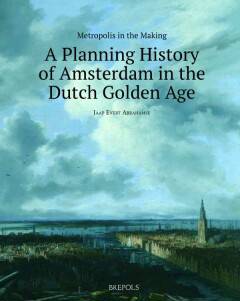
- Afhalen na 1 uur in een winkel met voorraad
- Gratis thuislevering in België vanaf € 30
- Ruim aanbod met 7 miljoen producten
- Afhalen na 1 uur in een winkel met voorraad
- Gratis thuislevering in België vanaf € 30
- Ruim aanbod met 7 miljoen producten
Zoeken
Omschrijving
Early modern Amsterdam was an ultra-modern city, laid out conforming to the triple demand of functionality, beauty and profit; a city that takes a unique place in European urban history because of its location, design, and impressive scale. Making of a Metropolis tells the story of Amsterdam becoming one of the largest cities in Europe in the seventeenth century. Amsterdam was one of the cradles of capitalism, but at the same time one of the most meticulously planned cities in the world. After the Fall of Antwerp in 1585, Amsterdam took over its position as the central trade hub in northwestern Europe and grew rapidly to become one of Europesurge in trade and industry went hand in hand with an explosive growth of Amsterdam, in 1613 and 1663 respectively, which increased the surface area of the city fivefold. Around the old town, the famous ring of canals was constructed. Beyond this residential district, mixed-use and industrial zones were laid out, while the construction of new harbour islands resulted in a five-kilometre waterfront along the borders of the IJ, the sea-branch that connected Amsterdam to the rest of the world. In the Dutch Golden Age, Amsterdam became an extraordinarily modern city, laid out in accordance with the trifold demand for functionality, beauty, and profit. It thus occupies a unique place in planning history because of its location, design, and impressive scale. This book examines how the administrative bodies of Amsterdam managed to undertake and complete these immense projects from the viewpoints of urban design, infrastructure, water management, logistics, and finance. The first part of this study is dedicated to the extension projects. A thorough analysis of extant administrative archives and numerous cartographic documents has enabled the author to reconstruct the decision-making process concerning the scale, design, and realization of the extensions. The second part examines in detail the use of the land, public space, and water management. Metropolis in the Making tells the story of one of the most meticulously planned cities in the world, and reveals how Amsterdam thus became, among many other things, a significant cradle of early modern capitalism and urbanism.
Specificaties
Betrokkenen
- Auteur(s):
- Uitgeverij:
Inhoud
- Aantal bladzijden:
- 535
- Taal:
- Engels
Eigenschappen
- Productcode (EAN):
- 9782503580302
- Verschijningsdatum:
- 12/03/2020
- Uitvoering:
- Hardcover
- Formaat:
- Genaaid
- Afmetingen:
- 226 mm x 284 mm
- Gewicht:
- 2562 g

Alleen bij Standaard Boekhandel
+ 265 punten op je klantenkaart van Standaard Boekhandel
Beoordelingen
We publiceren alleen reviews die voldoen aan de voorwaarden voor reviews. Bekijk onze voorwaarden voor reviews.











